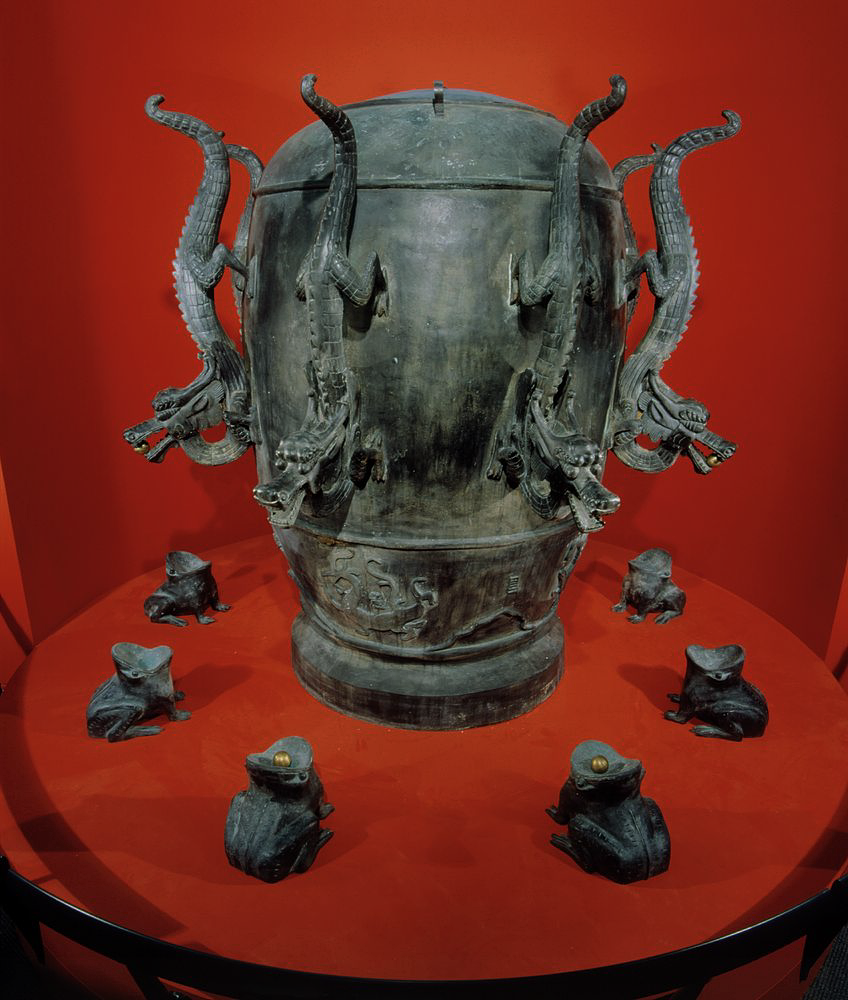
Zhang Heng's Seismoscope, The Zhang Heng's Earthquake Recorder, Te Papa Collection, Museum of New Zealand.

WHEN DRAGONS DETECTED EARTHQUAKES
This interesting-looking pot is in fact a seismoscope, the first known in the world, invented in 132 CE by a Chinese scholar named Zhang Heng.
It's a seismoscope, not a seismograph, which means it can detect the direction of an earthquake, but not its density. Nevertheless, it was an important object, since when reconstructed by a team living where Zhang Heng was born, in Zengzhou, Henan, it was able to detect four seismic events in China and Vietnam.
Zhang, who was born into a prominent family in 78 CE, spent his youth studying literature and training as a writer, eventually publishing a number of literary works that attracted the attention of the imperial court. He then moved to the capital Luo-yang, where he became a court gentleman working for the imperial secretariat. However, he developed a fascination for philosophy, mathematics and astronomy, and eventually asked for a three-year break to live in seclusion and pursue his interests. (He was, among other things, an astronomer, mathematician, inventor, geographer, cartographer, artist, poet, statesman and scholar of Chinese literature.)
He published a number of treatises and returned to court, where he was appointed Chief Astrologer, a very important position as the relationship between heaven and earth was the most important concept of the time.
Zhang believed in the egg-shaped theory, according to which the sky was like an egg and the earth like its yolk, lying alone at its center. Heaven therefore had Yang energy, while earth was Yin, and the two forces could be balanced by the efforts of mankind.
This is why Zhang imagined a seismoscope, designed as an egg surrounded by eight dragons with a ball in their mouth. Underneath were eight frogs, and when an earthquake occurred, a ball fell into their mouths, causing a sound. The position of the falling ball indicated the cardinal direction of the earthquake, which could then be used to interpret the event.
He presented his first prototype, and everyone was impressed but didn't take it seriously. Shortly afterwards, however, a ball fell from one of the dragons, indicating that an earthquake had occurred in the northwest, although no tremors were felt in Lo-yang. He reported the matter to the emperor and became famous when news of the real earthquake arrived from 500 km northwest of the capital.










